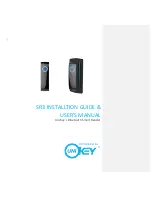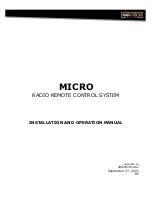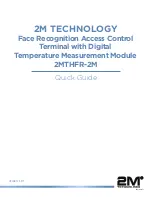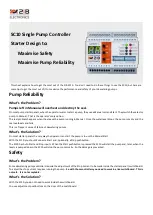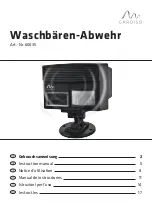
Page 8 of 24
The
Flexcharge
TM
Energy State Taper Charge Method
The Energy State Taper Charge Process monitors the battery for the full charged resting
voltage of the cells.
There are tremendous advantages to this charge method.
* Zero overcharging
* Exceptionally low gassing (Up to 90% less)
* Non-Destructive Micro-Equalization at each full charge
* The battery’s chemical processes actually control the charging.
* No RFI or EMI emissions to interfere with radio equipment.
The need for temperature compensation is greatly reduced because the plate voltage is not constantly held at the
critical plate saturation point. Tapering is controlled by the battery's level of charge rather than a set timer and fixed
voltage as in PWM and other constant voltage charge methods. The battery takes exactly what it needs rather
than being forced to take a set voltage. With the
Flexcharge
method you can charge your battery bank indefinitely
without any possibility of overcharging. The batteries will last longer, require less watering maintenance, and hold
a better charge.
As charging begins the controller allows full charging current to pass directly to the battery. When the battery
voltage rises slightly above the plate saturation point, the controller opens the charging circuit. The chemical
charging process continues until the battery voltage floats down to a voltage slightly above 13.6V. At this point the
battery is ready to accept another charge pulse. This charge regulation method is actually controlled by the
battery's ability to accept energy. When the battery needs more energy, the controller applies it. Later in the
charging cycle the controller will cycle ON and OFF sending full charge current pulses into the plates. A process
which charges with very low gassing, and micro equalizes the cells at the same time. As the battery reaches a
higher level of charge the amount of time the controller spends in charge is reduced, and the time in rest is
increased. At full charge the controller will apply short duration pulses to maintain the battery at an average
voltage of about 13.75 volts. This keeps gassing to a minimum while effectively trickle charging, and equalizing
your battery bank.
Summary of Contents for NC25A-12
Page 11: ...Page 11 of 24...
Page 12: ...Page 12 of 24...
Page 13: ...Page 13 of 24...
Page 14: ...Page 14 of 24...
Page 15: ...Page 15 of 24...
Page 16: ...Page 16 of 24...
Page 17: ...Page 17 of 24...
Page 18: ...Page 18 of 24...
Page 19: ...Page 19 of 24...
Page 20: ...Page 20 of 24...



























